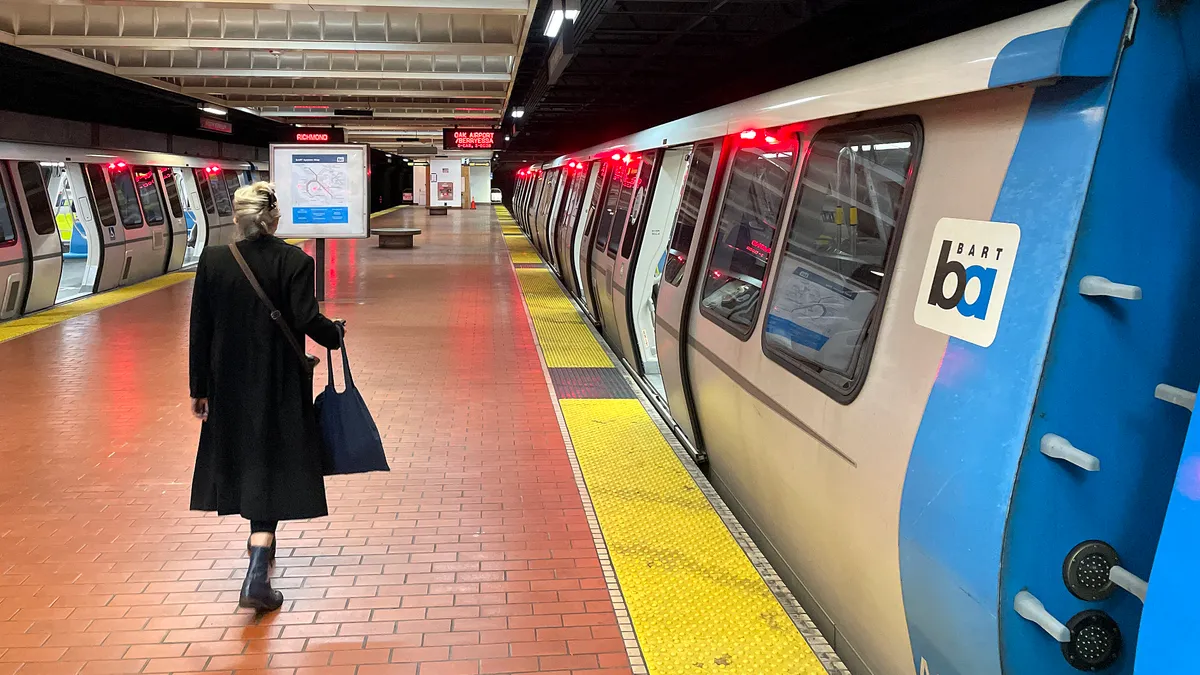Dive Brief:
- Two major credit ratings firms recently restated their negative views on mass transit agencies, citing ongoing subpar ridership and the looming end of federal rescue funds for some operators. S&P Global Ratings and Moody’s Investors Service previously downgraded their view of the public transit sector to negative.
- Moody’s Investors Service reaffirmed its stance on Nov. 16, stating that transit systems “will need to secure long-term funding sources or cut services and make other operational adjustments — or some combination thereof — to stabilize finances.”
- S&P Global Ratings noted in a Sept. 28 ratings outlook that transit systems traditionally reliant on farebox revenues will “struggle to balance operating funds” while those supported by significant tax revenues, such as a dedicated sales tax, have been given more positive ratings.
Dive Insight:
Transit ridership in the U.S. plummeted with the onset of the COVID-19 pandemic in early 2020 and remain at less than 80% of the pre-pandemic norm nationally, according to the most recent data published by the American Public Transportation Association.
The federal government stepped in with some $71.7 billion in rescue funds, but transit agencies are close to exhausting those resources. A May 2023 APTA survey revealed that more than half of the 122 transit agencies that responded said they expect operating expenses to exceed available funds in the next five years. Among large agencies — those with operating budgets over $200 million — more than two-thirds anticipate hitting a fiscal cliff by 2026.
Credit downgrades could further cloud the financial picture for those agencies, as borrowing costs could increase. Citing the San Francisco Bay Area Rapid Transit District as a case in point, Moody’s noted that service cuts contemplated by BART “illustrate some of the decisions facing transit systems when considering service levels,” adding that such changes “risk exacerbating the ridership decline and, in turn, can make it more challenging to secure needed government funding.”
The Chicago Transit Authority will run out of federal relief funds by 2026, according to the agency’s 2024 fiscal budget proposal. The agency anticipates operating expenses of $2.2 million in 2026, with revenue from fares, advertising and other income totaling just $463,673. The Massachusetts Bay Transportation Authority’s fiscal 2024 $2.7 billion budget relies on “hundreds of millions of dollars in one-time funding,” according to WBUR. Both the CTA and MBTA plan to increase spending in 2024.
There are a few bright spots. S&P Global Ratings raised credit ratings for eight transit issuers as of September, thanks to dedicated taxes for transit “as well as the fundamental underlying strength of their tax bases.” In October, the ratings agency upgraded the New York Metropolitan Transportation Authority’s transportation revenue bonds based on dedicated state tax revenues and increasing ridership.
“However, for most other transit agencies, identifying a sustainable tax and revenue model to meet operating and long-term capital needs remains an ongoing topic of debate, setting up key decisions in the coming months that will pit service levels against available resources for 2024 and beyond,” S&P Global Ratings said in its September outlook.












